 |
Hägglunds & Soner, Pbv 301 armored personnel carrier, Sweden, 220 units built from 1961 to 1963, in service from 1961 to 1971. 150 hp, 45 km/h, 11.7 t, Bofors 20 mm, 8 + 2 crew.
|
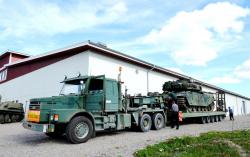 |
A Centurion tank arrives on a transport platform Scania-Vabis 143H to demonstrate the weekend ahead.
|
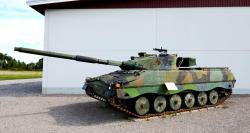 |
Hägglunds & Soner, IKV 91 tank destroyer, Sweden, 220 units built between 1975 and 1978, 330 hp, 16.3 t, 65 km/h, 6.5 km/h in water.
|
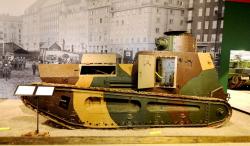 |
Tank Stridsvagn (Strv) M/21-LK II, 10 t, 50 hp, 16 km/h, after 85 hp and 18 km / h is a German design but looked like the English Whippet tank. 10 copies were bought to Germany in 1921, imported as "tractor parts". In 1923, five copies participated in trials whose primary purpose was the mobility. They remained in service until 1939. A copy is in the Museum of Munster, Germany.
A tank of this type is being restored at Arsenalen Museum, Strängnäs. It remains the body to be prepared and lifted. The whole tank will be ready in June 2018 for events of summer.The test drive is here : https://www.facebook.com/arsenalen.sverigesforsvarsfordonsmuseum/videos/1067166833426019/?hc_ref=ARSVVE7IyN-83Oe1oYkIFKittkpW8J00MwQHaFme4unp-cHh2L_IkqImXBIRW_gqT9o&fref=nf
|
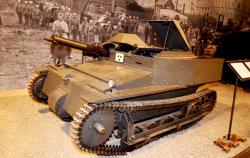 |
Carden-Loyd Mk V Vickers Armstrong light tank, Great Britain, 450 built in England, 2 ordered in 1926 and delivered in 1931. In 1939, they were given to the Army Museum.
|
 |
Stridsvagn (STRV) FM/28 tank Renault NC 27 purchased in France for trials in 1928. It appeared that the transmission and the tracks whose reliability didn’t favor additional purchase and Sweden took the decision to develop a new tank itself. This tank is the only survivor of this type.
|
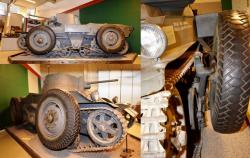 |
Stridsvagn ( STRV ) FM/31wheel-cum-track tank was designed in 1931 by Landsverk , Sweden, and based on a German design of the 20s. 150 hp, 11.5 t, 75 km/h on road, 35 km/h off-road. The combination of wheels and tracks would allow high speeds on roads and good performance in rough terrain, but the design was complex and the system vulnerable. The tests took place in 1935-36, but newer models already made it obsolete at delivery. This model was used for training charioteers until 1940.
|
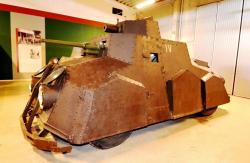 |
Pansarbil, armored car FM/29 Oskarsham built in 1932 by Landsverk, Sweden. Four wheel drive and steer with the same speed in each direction with a rear driver. Only one copy was built because of the price and too large dimensions. Its service lasted until 1946.
|

|
Battle Tank I, SdKfz 101, built at 1160 units by Henschel, MAN, Krupp - Gruson and Daimler- Benz from 1934 to 1936 in Germany, last used by Spain until 1954. This model arrived in Sweden shortly after the WW II.
|
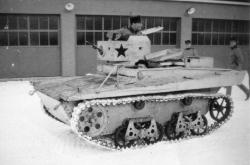 |
T 37 Vinter. This picture was taken in 1940 after it arrived to Sweden from Finland. It is fitted with a winter camouflage but it is the same one as on display in the museum of Strängnäs. See below the T 37 as it is nowadays. Stefan Karlsson Archives.
|
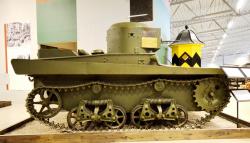 |
TU Amphibious Tank T37, built 1,200 units between 1933 and 1936 by Factory No. 37 in the former Soviet Union, 3.2 t, 35 km/h, 40 hp.
|
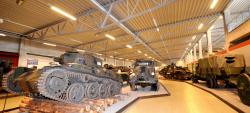 |
Overview
|
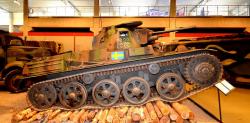 |
M/38 Tank of Landswerk, Sweden, built 200 units in 1938 /39. 142hp, 8.5 t, 45 km/h. 16 copies were used in Sweden from 1938 to 1957.
|
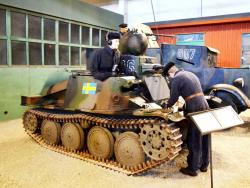 |
M/37 Tank of 1937. This is the Czech model AH- IV T. Modern for its time, it remained in service until 1953.
|
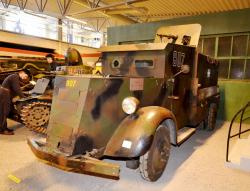 |
M/31 armored car built by Bofors, 32 units on a truck chassis Volvo & Chevrolet from 1931 to 1940. The M/31 remained in service until 1958. 60 km/h, 4.2 t.
|
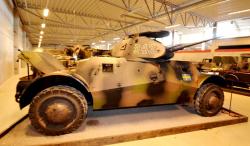 |
Armored car M/40 Landsverk Lynx / Volvo built in 1939 to 30 units, came from a Danish specification. The road performance was limited due to the weight. 4 wheel drive and steering and a driver at each end allowed equal speed in both directions. They were in service until 1958. 135 hp, 8,7 t, 70 km / h.
|
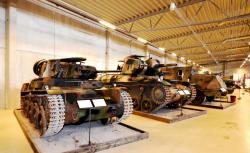 |
Overview : - M/40L-LS III Tank 1941-1942 of Landsverk , Sweden, 100 built.
- M42 Tank, 1943-1945, by Landsverk and Volvo. 282 were built. This was the only heavy tank in Sweden during World War II. The modern design was still quickly exceeded. Became Ivk 73 after modifications, it remained in service until 1965. 380 hp, 22.5 t, 42 km/h.
- M42 SKP 'KP'' Armoured Truck 4x4 Scania-Vabis AB, 1944-46, 300 built. They were withdrawn from service in 2004 after 60 years of loyal service.
|
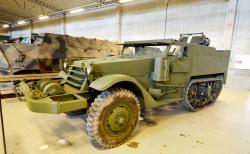 |
Half-Track M16 of White Motor Company, USA, built 50,000 units in 1942-43, a figure that includes all types of track Half-Track of White, Autocar, Diamond, International Harvester. Used until 1999, tracks resumed the system Kégresse of the 20s. 148 hp, 9 t, 70 km/h.
|
 |
M/41 Tank ordered in 1939 in Prague and delivered in 1942-43 by Scania-Vabis (under license). Despite its leaf springs and riveted frame, he had good off-road performance and excellent reliability. The M/41 M/43 was rebuilt in 1959 /60. The museum here converted M/43 into a M/41.
|
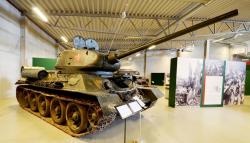 |
Tank T-34-85. The T-34 dates from 1940, but the T-34-85 with a new gun entered service in 1944 and was manufactured, all types, at 84,000 copies until 1950. It remained in service in many countries until the 90s. 500 hp, 32 t, 55 km/h.
|
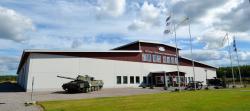
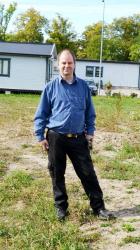
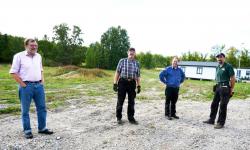





















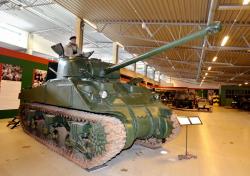
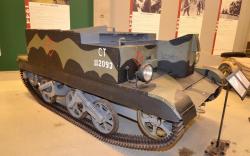
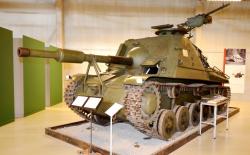
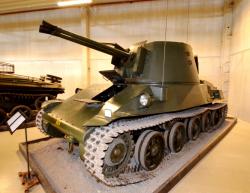
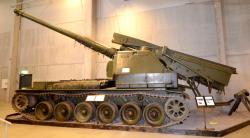

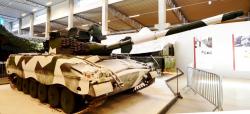
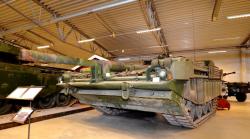
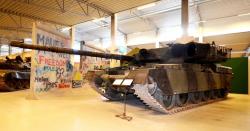

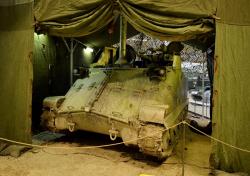
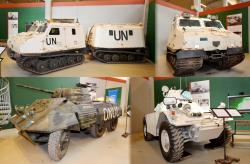
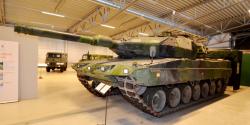
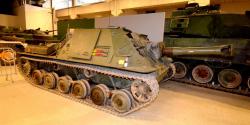
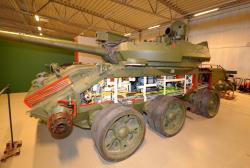
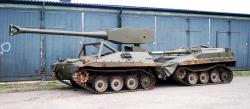
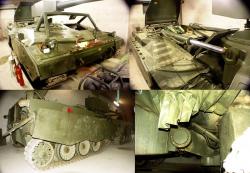
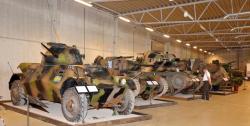
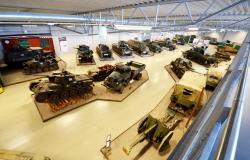
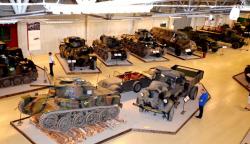
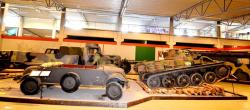
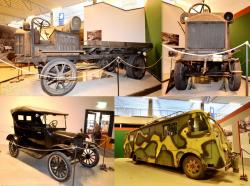
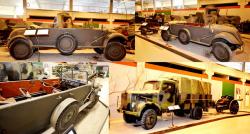
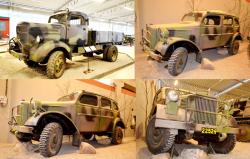
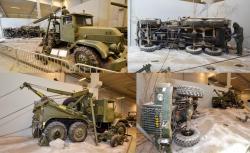

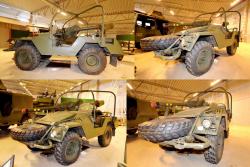
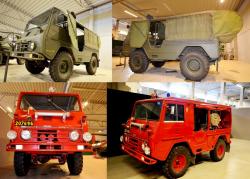
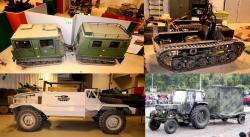

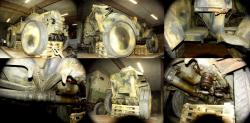
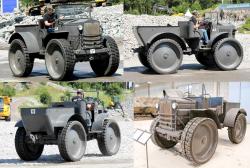
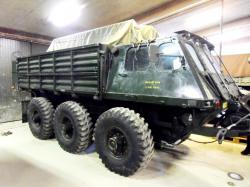
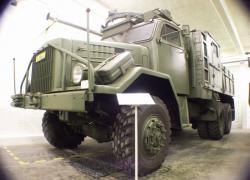
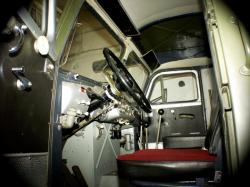

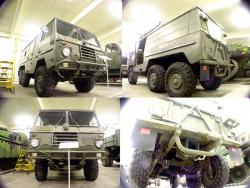
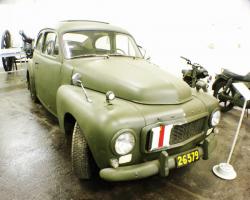
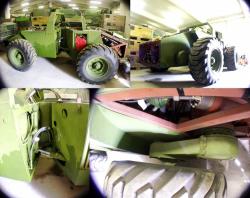

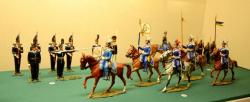
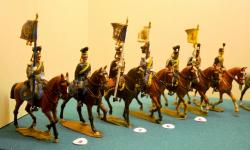
 Français
Français
 English
English
 Español
Español
 Italiano
Italiano
 Deutsch
Deutsch
 Nederlands
Nederlands
 Portuguesa
Portuguesa